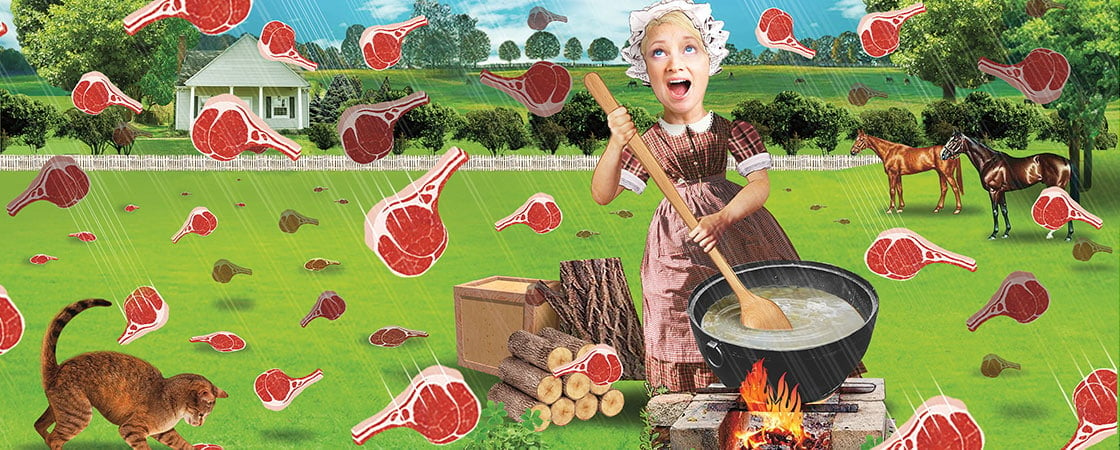SHUTTERSTOCK.COM
The date was March 3, 1876. There wasn’t a cloud in the sky in Bath County, Kentucky. A woman named Mary Crouch was doing chores in her yard.
Suddenly, something started falling from above. It wasn’t rain, hail, or snow. It was meat. Chunks of slimy animal meat were dropping from the sky!
It was March 3, 1876. There wasn’t a cloud in the sky. A woman named Mary Crouch was doing chores in her yard in Bath County, Kentucky.
Suddenly, something started falling from above. It wasn’t rain or snow. It was meat. Chunks of slimy animal meat were falling from the sky!

